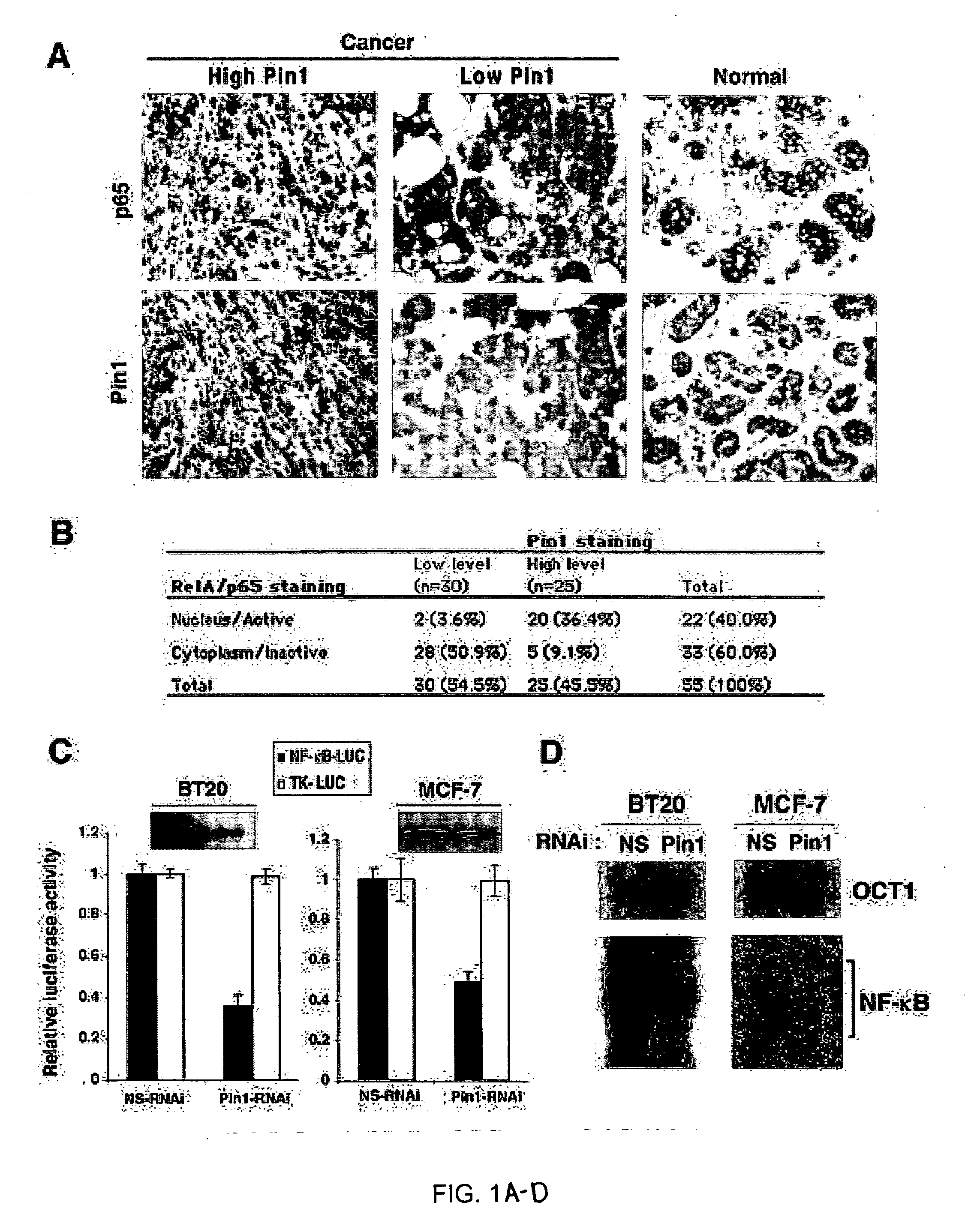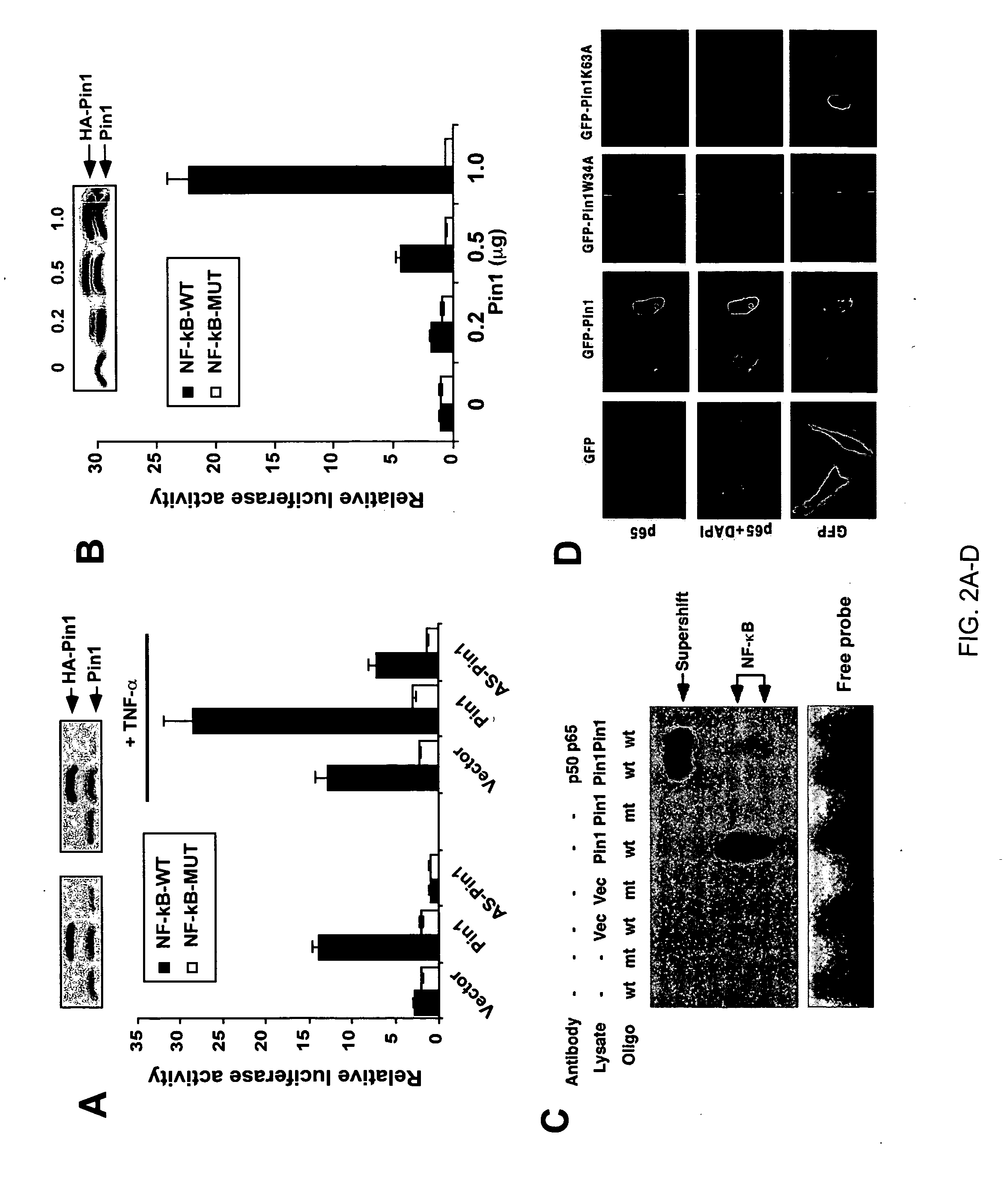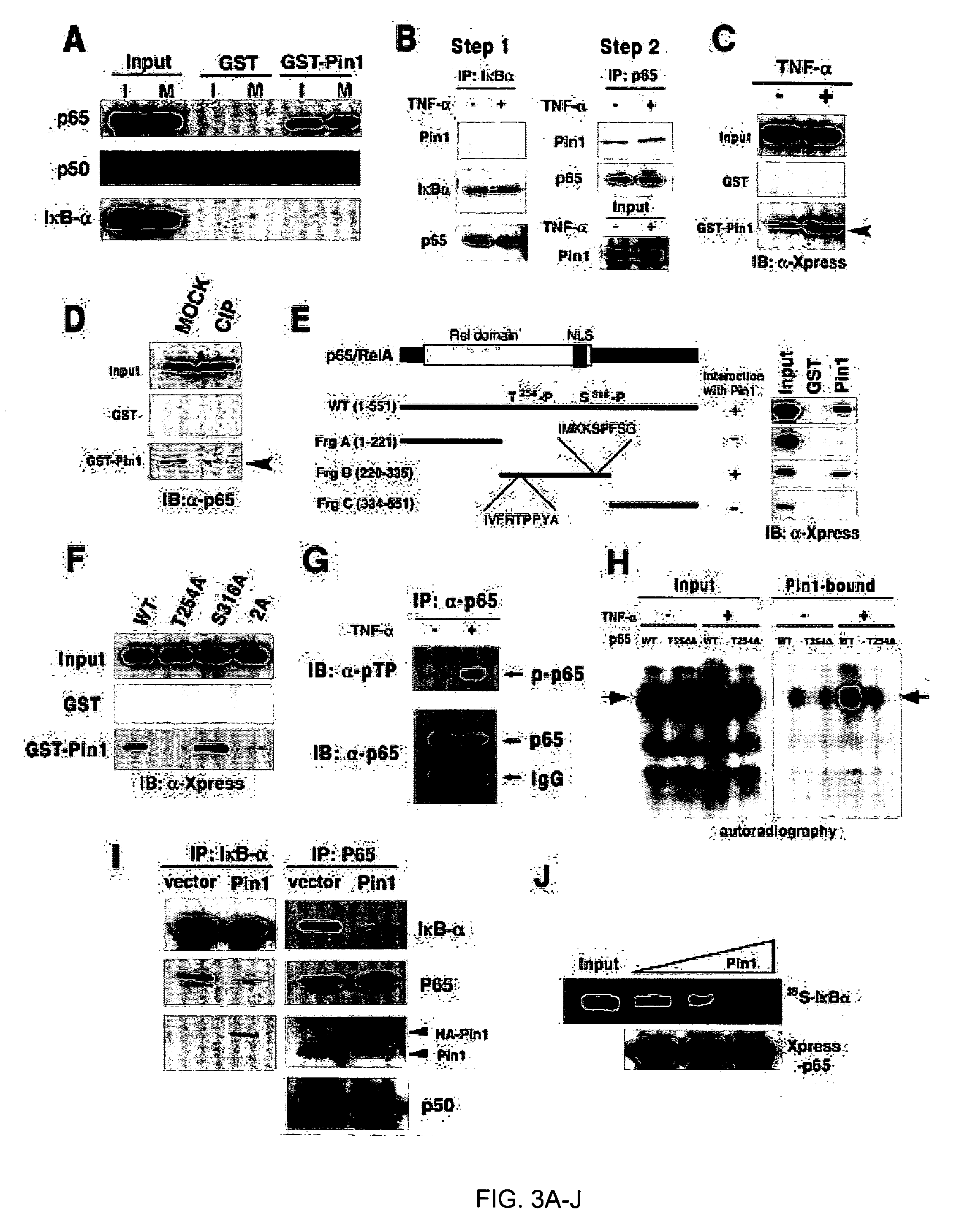Novel regulatory mechanisms of NF-kappaB
a regulatory mechanism and nf-kappab technology, applied in the field of new regulatory mechanisms of nf-kappab, can solve the problems of inability to transactivate nf-b target genes, unstable p65 mutants, and failure to act as pin1 substrates, and achieve the effect of inhibiting the degredation of nf-kb
- Summary
- Abstract
- Description
- Claims
- Application Information
AI Technical Summary
Benefits of technology
Problems solved by technology
Method used
Image
Examples
example 1
Pin1 Levels Correlate with NF-B Activation in Human Breast Cancer Tissues
[0128] Both Pin1 and NF-κB have been shown to be highly activated in many human cancers (Baldwin, 2001; Karin et al., 2002; Ryo et al., 2002; Ryo et al., 2001; Wulf et al., 2001). Given that the NF-κB activation is regulated by a series of phosphorylation events, it was investigated whether Pin1 is involved in this regulation. To address this question, the correlation between Pin1 levels and NF-κB activation was examined in fifty human primary breast cancer samples and five normal breast tissues using immunohistochemitry. 20 out of 25 cancer samples containing high Pin1 levels had the strong nuclear accumulation of p65 protein, indicative of active NF-κB (FIGS. 1A, B). In contrast, 23 out of 25 cancer samples that contained low Pin1 levels exhibited cytoplasmic p65 localization, indicative of inactive NF-κB (FIGS. 1A, B). Each of 5 normal mammary gland samples contained low Pin1 levels and cytoplasmic p65 loca...
example 2
Pin1 Activates NF-B Signaling
[0129] The above results suggest that Pin1 activates NF-kB signaling. To further explore this possibility, the following three different assays were used. First, gene reporter assay to examine the effect of Pin1 on NF-kB transcriptional activity were performed. Overexpression of Pin1 activated, whereas depletion of endogenous Pin1 using Pin1 AS suppressed NF-kB transcriptional activity in a dose dependent manner (FIGS. 2A and B). Furthermore, Pin1 also cooperated with TNF-α to activate NF-kB activity (FIG. 2A). These results indicate that Pin1 enhances NF-kB transcriptional activity by cooperation with upstream signaling. Next, EMSA assays were performed to examine whether overexpression of Pin1 increases DNA binding activity of NF-kB in cells. The DNA binding activity of NF-kB was significantly increased in Pin1 transfected cells, but not in vector controls (FIG. 2C). Furthermore, these DNA-protein complexes were supershifted by either anti-p65 or -p50...
example 3
Pin1 Dose not Alter the IKK Activity and Phosphorylation Status of IkB
[0131] Given that Pin1 enhances NF-kB transcriptional activity, a key question was to determine in which pathway Pin1 might exert its effect in NF-kB signaling. NF-kB has been shown to be activated by IKK mediated phosphorylation and subsequent degradation of the NF-kB inhibitor IkBa. This allows NF-kB to translocate into the nucleus to activate target genes (Baeuerle and Baltimore, 1996; Ghosh et al., 1998). To examine whether Pin1 affects NF-kB upstream regulators, we performed the IKK kinase assay and immunoblot analysis using a phospho-specific IkBa antibody (Ser32) to determine effects of Pin1 on the IKK activity and IkBα phosphorylation, respectively. Overexpression of Pin1 did not result in a detectable increase either in IKK kinase activity or IkBα phosphorylation, although both were increased by TNFα (FIGS. 10A, B). These results suggest that the effects of Pin1 on the activation of NF-kB might be indepe...
PUM
| Property | Measurement | Unit |
|---|---|---|
| Immunogenicity | aaaaa | aaaaa |
Abstract
Description
Claims
Application Information
 Login to View More
Login to View More - R&D
- Intellectual Property
- Life Sciences
- Materials
- Tech Scout
- Unparalleled Data Quality
- Higher Quality Content
- 60% Fewer Hallucinations
Browse by: Latest US Patents, China's latest patents, Technical Efficacy Thesaurus, Application Domain, Technology Topic, Popular Technical Reports.
© 2025 PatSnap. All rights reserved.Legal|Privacy policy|Modern Slavery Act Transparency Statement|Sitemap|About US| Contact US: help@patsnap.com



